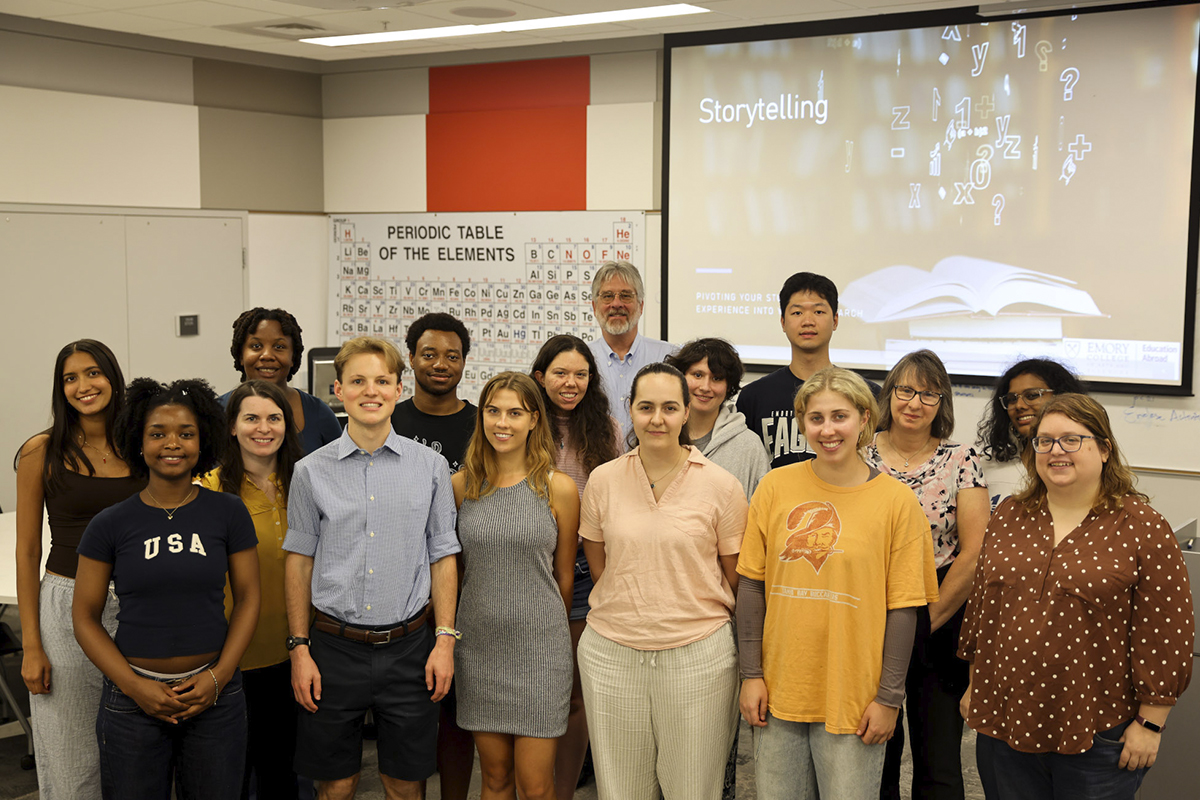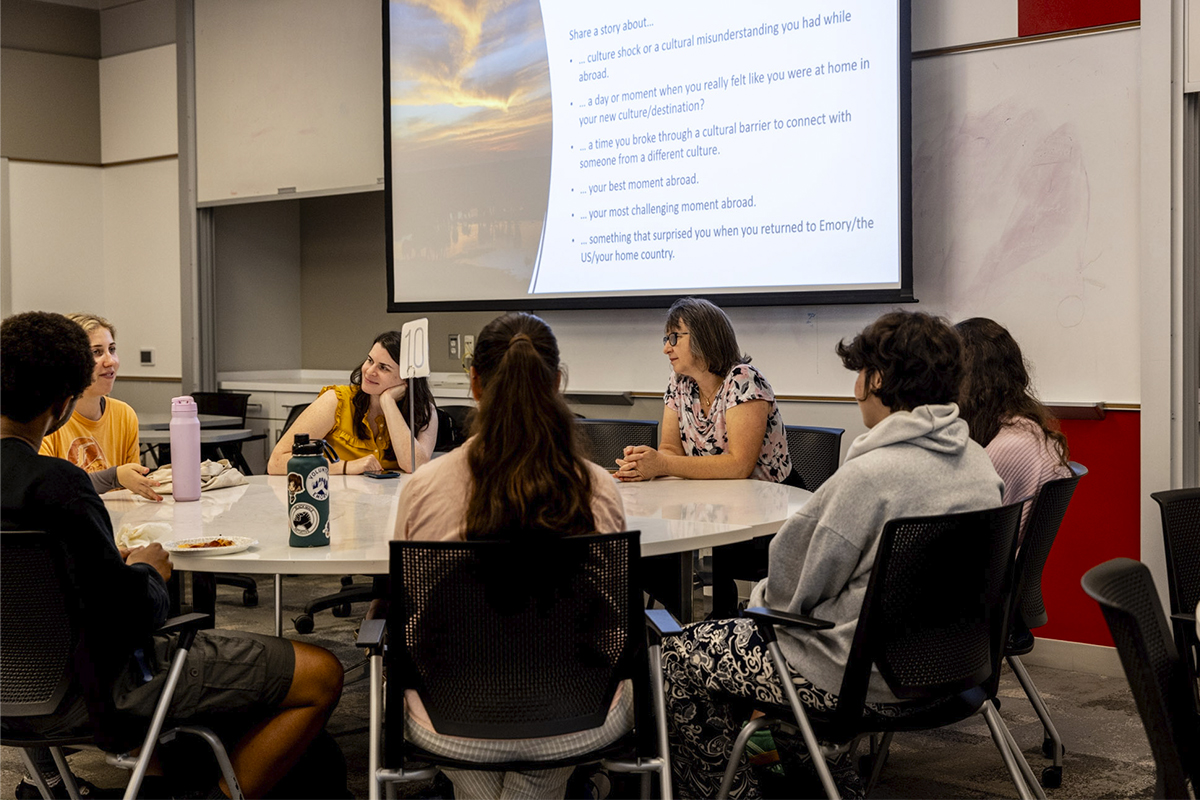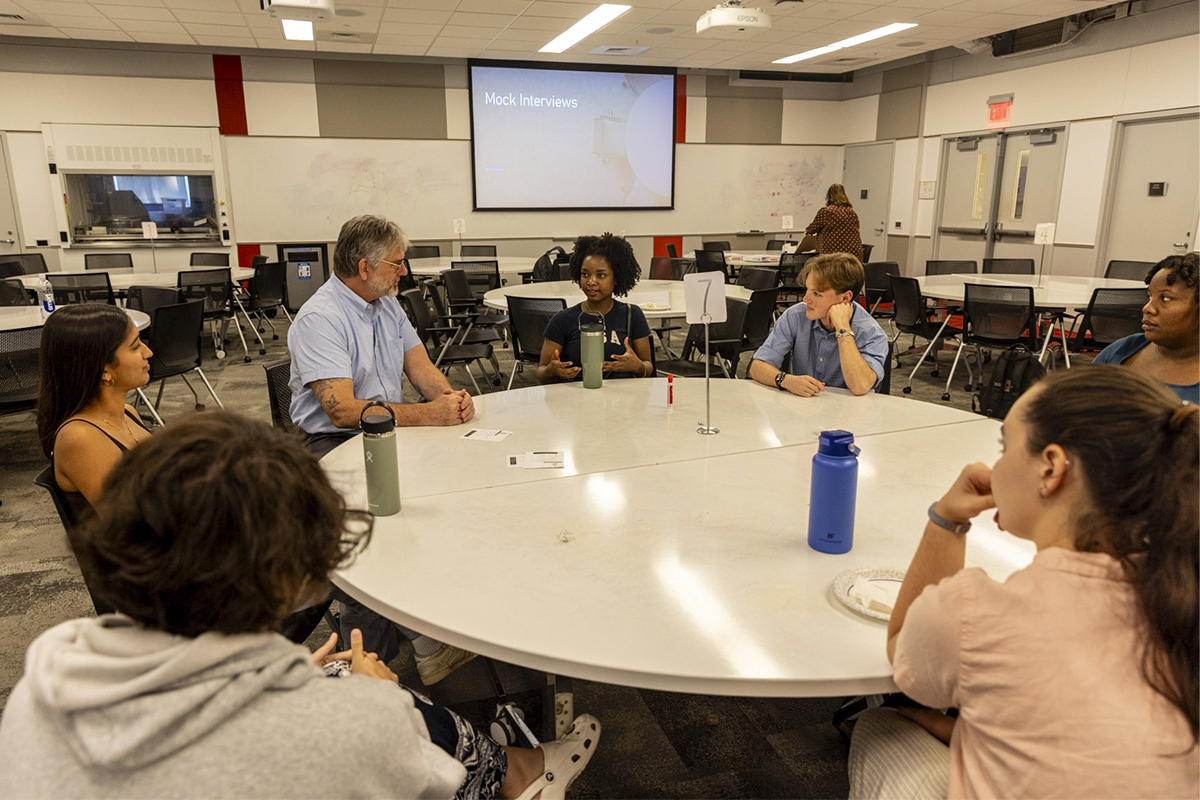Sasha Melamud had so much fun studying abroad in Spain this summer — and sharing about her experience — that she worries she’s become the traveler everyone avoids.
When she gets going, Melamud, a junior majoring in creative writing, is all smiles and enthusiasm as she describes the people she met, the food she ate and the two side trips she took to Portugal.
It was her first time outside the United States, and while she was initially nervous, she says she found it exhilarating.
In Spain, she took a deep dive into linguistics — specifically dialects — studying the differences between Catalan and Castilian Spanish. That included conducting in-person, on-the-street interviews and noting different dialects and speech patterns.
“It was really, really interesting to see just how different the types of Spanish were,” says Melamud, who is also studying Spanish and Portuguese on a pre-law track. “A lot of people assume that the Spanish that’s spoken in Spain is just streamlined, and it’s not.”
Translating international skills to the job market
Melamud’s was the type of profound experiential learning that a classroom can’t offer. During a recent Re-entry Orientation program hosted by Education Abroad in Emory College’s Office for Undergraduate Education, Melamud and other students unpacked what they learned academically and personally.
The annual event — which is open to any student seeking an undergraduate degree at Emory — is part debriefing and part instruction on how to use their newfound skills in the job market, says Laura Boudon, assistant dean and director of Education Abroad. Don Cornwell, director of professional development in Emory College’s Pathways Center, joined Education Abroad staff in helping students connect their experiences to employable skills.
“We know that when students who have studied abroad list the experience on their resume, interviewers often ask about it,” Boudon says.
Students shared short personal stories about their experiences in “story circles” and explored how to incorporate what they learned in practice job interviews. The event aimed to show the students that no detail about what they learned is too small, especially when they enter the job market.
The students who participated had studied all over the world, including England, Italy and Korea, says Meg Sonstroem, assistant director of Education Abroad.
“Being able to reflect on the experience helps you realize what you’ve gained,” Sonstroem says. “If you miss a train and you have to figure out how to get onto the next train, that’s a skill that you can use to show that you’re adaptable.”
Such skill-building is widespread at Emory. Almost half of Emory undergraduate students study abroad at some point during their time at the university, Boudon says. Close to 600 Emory College of Arts and Sciences students studied abroad last year.
In comparison, only about 2-3% of students at most U.S. colleges study abroad in any given year, Boudon says.
“It’s a unique experience for our students and we want them to capitalize on that,” Boudon says of Emory’s education abroad efforts.
Like Melamud, senior Sarah Lestrade enjoyed her experience so much that she can hardly wait to travel more. Lestrade, a student at Emory’s Nell Hodgson Woodruff School of Nursing, spent July and August in Lima, Peru.
She traveled to the South American city to study obesity and the connections between nutrition and activity levels as part of the Global Health Nutrition program in Peru. She practiced taking anthropometric measurements, such as height and weight, to calculate body mass index.
Lestrade says she chose Peru because of the influence of Emory in MOTION, a mobile health program in the School of Nursing that provides care to underserved groups.
“It was necessary for me to see a different population,” says Lestrade. “Emory in MOTION goes into disadvantaged communities where people don’t have access to health care and a lot of times there’s a language barrier. And when you provide education to patients on their health, it needs to be in the context of their culture.”
She also learned about Peru’s history, including Caral-Supe, a 5,000-year-old archaeological site. As part of her visit, she went sandboarding in Huacachina, a desert community in southwest Peru, and swam with sea lions in the Palomino Islands, a group of small islands off the Peruvian coast.
Lastly, Lestrade, who grew up in Haiti and speaks French and Creole, said her studies in Peru helped to strengthen her Spanish.
“It’s different when you are in a Spanish-speaking country,” she said. “A lot of people in Peru speak English, so I didn’t have to speak a lot of Spanish. But it allowed me to listen, and that was a learning experience.”



